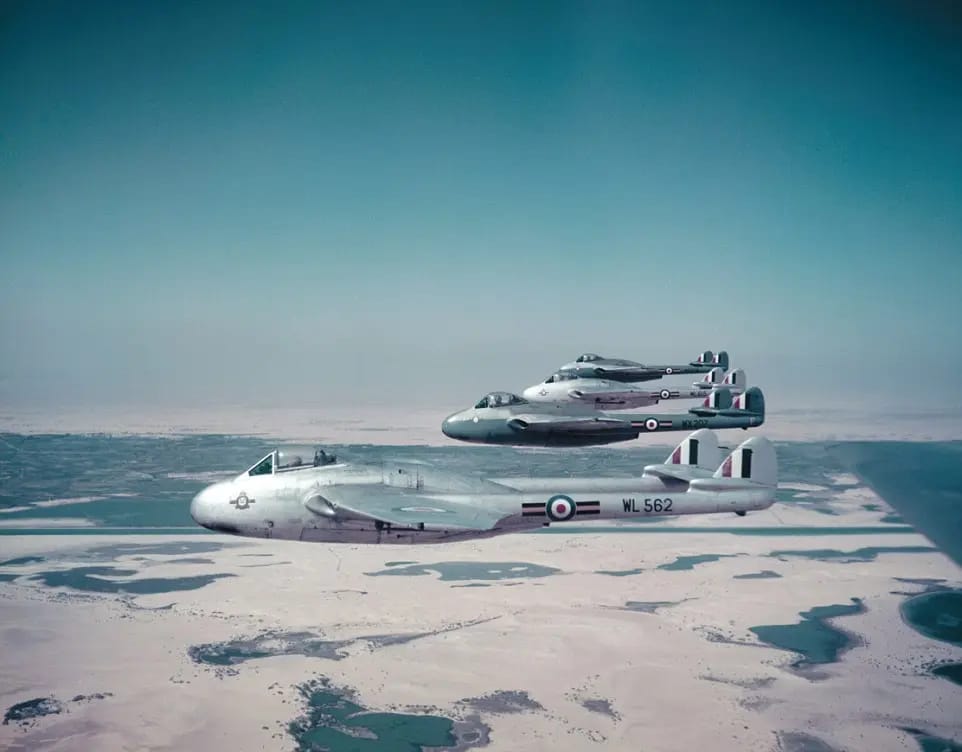
Following its independence in 1947, India took decisive steps to modernize its air force, shifting from propeller-driven aircraft like the Spitfire and Tempest to the cutting-edge world of jet aviation. Leading this transition was the de Havilland Vampire, the first jet fighter to serve in the Indian Air Force (IAF). Inducted in 1948, the Vampire not only signified India’s entry into the jet age but also made the IAF the first air force in Asia to operate jet-powered combat aircraft. Originally manufactured in the United Kingdom, the Vampire was later assembled domestically by Hindustan Aeronautics Limited (HAL), further embedding it into India’s aviation legacy.
A British-Built Jet with a Distinctive Profile
First flown in 1943, the Vampire was instantly recognizable due to its twin-boom tail configuration and central fuselage pod. It was powered by a single de Havilland Goblin turbojet engine, delivering a top speed of 882 km/h (548 mph) and a service ceiling of 42,800 feet. Although its flight systems were basic—with no radar and purely manual controls—the aircraft was effective in its time. The cockpit, while offering good visibility, had ergonomic limitations, such as poorly placed fuel gauges that required the pilot to shift the control column for reading. Its offensive capabilities included four 20 mm Hispano Mk. V cannons, with provisions for bombs or rockets, making it a potent multi-role fighter.
In Service with the RAF and the IAFBefore joining the IAF, the Vampire had already proven itself with the Royal Air Force (RAF), where it became the second jet fighter after the Gloster Meteor and the first jet to fly across the Atlantic Ocean. In Indian service, the Vampire replaced aging World War II-era piston-engine fighters and played a key role in the IAF’s evolution.
In Service with the RAF and the IAF
Before joining the IAF, the Vampire had already proven itself with the Royal Air Force (RAF), where it became the second jet fighter after the Gloster Meteor and the first jet to fly across the Atlantic Ocean. In Indian service, the Vampire replaced aging World War II-era piston-engine fighters and played a key role in the IAF’s evolution.
Over the years, India operated several Vampire variants:
F.3 (day fighter)
FB.52 (fighter-bomber)
NF.10 & NF.54 (night fighters)
PR.55 (reconnaissance)
These aircraft were used in both combat and training roles, contributing significantly to the IAF’s operational readiness during the early decades of independence.
While the Vampire was eventually retired from frontline service, its legacy lives on as the aircraft that propelled the Indian Air Force into the modern era of jet-powered combat aviation.
